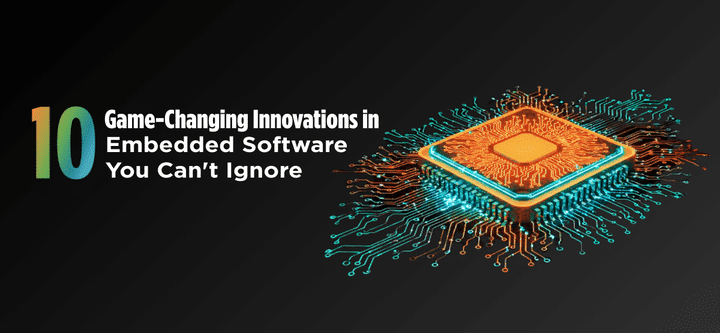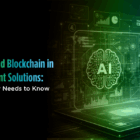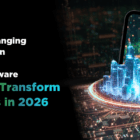From powering autonomous EVs and medical wearables to enabling industrial automation and fintech devices, embedded software has become the digital nerve center of modern electronics. As of March 2025, the embedded software market is projected to surpass USD 35.6 billion globally by the end of the year (Source: MarketsandMarkets, 2025), driven by the surge in smart devices, connected infrastructure and AI adoption.
Embedded systems are no longer static firmware locked into devices. They are dynamic, intelligent and updatable. And as hardware becomes more powerful and compact, the software running on it is undergoing a transformation of its own.
Let’s dive into the 10 most significant trends shaping the future of embedded software in 2025 and beyond.
1. Smarter with AI: Machine Learning at the Edge
AI is no longer confined to the cloud. The 2025 Embedded World Conference in Nuremberg emphasized a growing focus on Edge AI, where embedded software now hosts lightweight ML models for real-time inference.
- TinyML frameworks like TensorFlow Lite and Edge Impulse are being integrated into microcontrollers with <1MB flash.
- 73% of developers surveyed by Arm in January 2025 reported implementing AI models directly in embedded applications.
- Use cases include predictive maintenance in industrial IoT, biometric recognition in fintech and gesture control in smart devices.
What it means: Embedded software is evolving to support complex, autonomous decisions without relying on constant cloud connectivity.
2. Code with a Shield: Security-First Firmware
As devices become interconnected, the attack surface widens. A 2025 ENISA Cybersecurity Report revealed that 68% of embedded IoT attacks occurred due to outdated or insecure firmware.
Emerging standards like ISO/SAE 21434 for automotive cybersecurity and PSA Certified Level 2 are setting new benchmarks for secure firmware.
- Developers now implement Secure Boot, Encrypted OTA (Over-The-Air) Updates and Hardware Root of Trust (RoT) as standard practice.
- Runtime protection and anomaly detection using AI-based firewalls are entering embedded domains.
What it means: Embedded software is shifting from function-first to security-by-design architecture.
3. Connectivity Reimagined: Rise of LPWAN and 5G NR-Light
Embedded systems are leveraging next-gen connectivity to enable ultra-low power, long-range communication.
- NB-IoT, LTE-M and LoRaWAN are now widely embedded in smart metering, asset tracking and agriculture automation.
- 5G NR-Light (RedCap)—a lighter version of 5G—is set to see mass adoption in 2025 for connected embedded applications (Source: GSMA, Feb 2025).
- Qualcomm’s latest 212 LTE IoT Modem, launched in Jan 2025, consumes <1 µA in sleep mode, ideal for embedded use.
What it means: Embedded software is adapting to support an increasingly diverse and dynamic network landscape.
4. From Static to Dynamic: OTA Everything
OTA (Over-the-Air) updates have become a standard expectation. In embedded systems, this is driving a complete rethinking of firmware architecture.
- Microcontrollers like ESP32-S3 and STM32U5 now include dual bank flash to enable secure OTA mechanisms.
- 85% of embedded developers, according to a February 2025 VDC Research report, rank OTA as a critical feature for scalability and longevity.
What it means: Embedded software must be written with modularity, version control, rollback mechanisms and update resilience.
5. Real-Time Gets Smarter: RTOS Evolution
The demand for Real-Time Operating Systems (RTOS) is surging in applications like robotics, medical diagnostics and EV battery management.
- In 2025, Zephyr OS and FreeRTOS will lead adoption with enhanced security, multitasking and ultra-low power capabilities.
- According to a Q1 2025 report from Embedded Computing Design, 69% of new embedded projects opted for an RTOS instead of bare-metal programming.
What it means: RTOS-driven design enables more reliable, multi-threaded and interrupt-safe embedded software experiences.
6. Modular Design: Containerized Embedded Software
Borrowing a page from cloud development, containerized environments are entering the embedded space.
- Tools like BalenaOS and Docker Slim for ARM devices allow developers to isolate services, streamline updates and reduce system failures.
- This is particularly useful for embedded Linux and gateway-class devices with enough processing power to handle containers.
What it means: The concept of microservices is now influencing embedded software architecture—especially for edge computing devices.
7. Digital Twins: Simulating Before Deploying
The integration of Digital Twin Technology is reshaping embedded system design.
- According to IDC’s 2025 forecast, 31% of embedded teams now use digital twins to model system behavior under real-world conditions before deployment.
- Popular tools like MATLAB Simulink, PTC ThingWorx and Siemens Twin offer real-time simulation.
What it means: Embedded software can now be simulated and validated virtually—reducing debug time and development cycles by nearly 35%, per Synopsys’s 2025 whitepaper.
8. Continuous Integration Meets Embedded
DevOps for embedded systems, often called DevEmbeddedOps, is gaining ground in 2025.
- GitLab and Jenkins are being extended with toolchains that automate unit testing, build verification and static code analysis for microcontroller code.
- 49% of embedded teams now practice CI/CD (Source: Embedded Software State of Development Survey, March 2025).
What it means: Agile practices are making their way into traditionally rigid embedded workflows, making development faster and more reliable.
9. Energy-Aware Software Design
With the rise of battery-powered devices, writing energy-efficient embedded software is not optional—it’s mandatory.
- Microcontrollers now offer deep-sleep, stop and standby modes with software-controlled wake-up triggers.
- Using tools like ST’s EnergyMeter and Renesas E2 Studio, developers can optimize energy usage at the firmware level.
What it means: Power profiling and energy-aware code optimization are becoming core parts of the embedded software lifecycle.
10. Web Meets Embedded: UI/UX for Microcontrollers
Gone are the days of clunky LCD screens. In 2025, embedded UI/UX is getting smarter and smoother.
- Embedded GUI frameworks like TouchGFX, LVGL and Qt for MCUs now support animated, touch-enabled interfaces on ultra-low-power devices.
- Evolute’s embedded products, such as micro ATMs and Android POS systems, leverage this to deliver a seamless fintech user experience.
What it means: The line between consumer-grade UI and embedded displays is blurring, enhancing usability and adoption.
Evolute’s Role in the Embedded Software Revolution
At Evolute Group, we stand at the forefront of embedded software innovation. Our embedded platforms—powering fintech devices, IoT gateways, EV infrastructure controllers, and more—are designed to be intelligent, secure and scalable. With expertise in real-time OS, secure firmware development, OTA update architecture, and custom embedded UI, we help industries transform ideas into future-ready solutions.
Whether it’s biometric validation in remote banking or energy management in EV systems, Evolute’s embedded software empowers mission-critical performance in the toughest environments.
Wrapping Up: The Embedded Code That Shapes Tomorrow
As devices get smarter, smaller and more interconnected, the embedded software driving them must evolve just as rapidly. From AI at the edge and DevOps integration to enhanced security and UI fluidity, 2025 marks a turning point.
Key Takeaways:
- AI at the Edge is transforming real-time decision-making.
- Security by Design is now non-negotiable.
- OTA Updates and modular architectures are key to scalability.
- Digital Twins and CI/CD pipelines streamline development.
- Power-efficient coding and sleek embedded GUIs enhance device functionality and UX.
The future of embedded software is intelligent, adaptive and embedded in everything.





